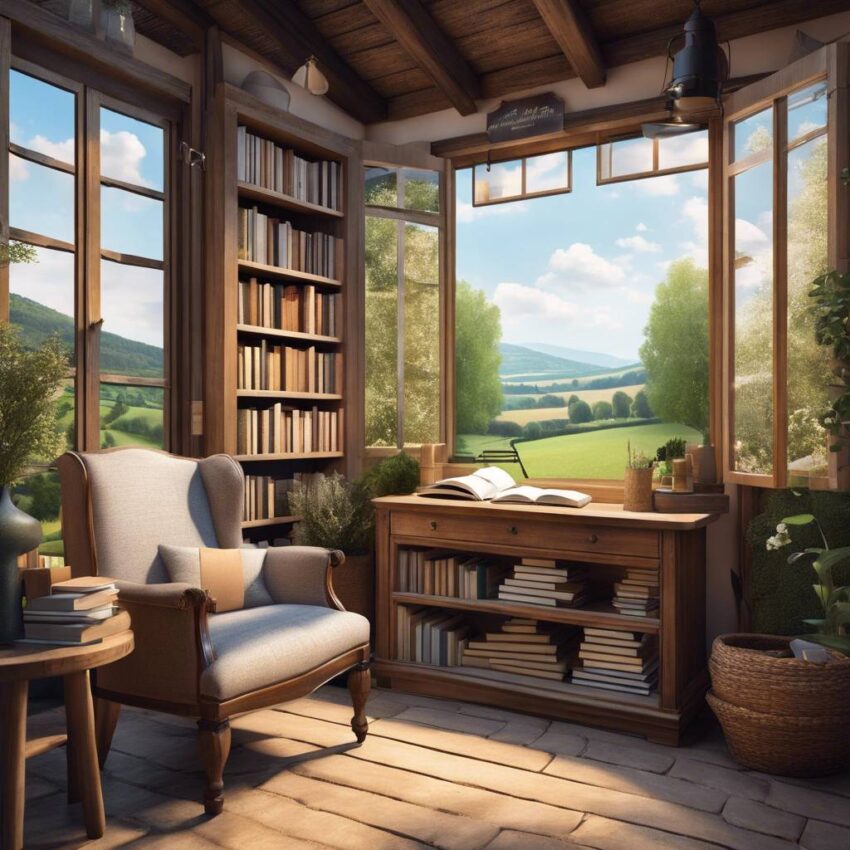As readers leaf through the pages of a gripping cozy murder mystery, they’re often transported to quaint villages, surrounded by the lush greenery of the countryside – a landscape where the flutter of birdsong can trace a thread to the heart of a surprising plot. The backdrop might seem idyllic, but it’s much more than a mere setting; it’s a character in itself, brimming with histories, secrets, and skills that shape the lives of those within it. One such skill, hedgelaying, has quietly determined the course of Britain’s rural landscape for centuries, ardently conserved by craftsmen like Richard Negus.
Negus, an experienced hedgelayer from the verdant fields of Finningham near Stowmarket, is set to publish his debut book, “Words From The Hedge: A Hedgelayer’s View of the Countryside,” tapping into the very soul of conservation in the British countryside. His voice, informed by over two decades of tending to the sinewy arteries that hedge the country’s fields, promises to offer immersive insights into a craft often overlooked yet intrinsic to the rural aesthetic — a world familiar to aficionados of Cozy mystery and Female detective titles.
Nestled within the tradition of hedgelaying lies a parallel that readers of Cozy murder mystery books will find palpable. The craft of weaving branches, much like the narrative of a well-crafted story, requires a blend of intuition, patience, and knowledge of the local environment. In this way, the hedgelayer and the Amateur sleuth share a kindred spirit, both discerning patterns and shaping outcomes with a meticulous hand.
Those who treasure the bucolic settings of Murder thriller books for sale should be aware of the role that such craftspeople play in molding the landscapes we so admire in fiction. Hedgerows serve not only as the quintessential emblem of Britain’s rural charm but also as vital corridors for wildlife and as living relics of historical land management practices. They provide clues — not unlike the evidence gathered by a shrewd detective — to the natural and human history of the land.
Indeed, for fervent readers of the genre, understanding the context in which these tales unravel adds breadth to the narrative experience. Just as a detective pieces together fragments of evidence, the conservation of hedgerows allows a glimpse into the interconnectedness of nature’s own mysteries. As Richard Negus might attest, these green labyrinths of thorn and branch are chapters in a story spanning centuries, each a keeper of secrets, some of which might inspire the sinister or the salutary in the plot of our favorite novels.
Such conservation efforts only enrich the authenticity of the settings in which many cozy mysteries are cast, giving fans another reason to appreciate the landscapes that form the canvas of their beloved stories. The whispers of the hedgerow, the rustle of leaves, and the silent movements of creatures within — all these are the minutiae that enliven the plot, creating an atmosphere that’s both charming and chilling.
This connection between traditional crafts and storytelling is not trivial. As readers, understanding a landscape deepens our engagement with the tale. Learning from craftsmen like Negus can enhance the reader’s experience, offering a new lens through which to view the rich tapestry of the cozy murder mystery setting.
Without a doubt, the forthcoming publication of “Words From The Hedge” accentuates the vitality of rural skills and the conservation of traditions that are far more than historical footnotes; they are the lifeblood of ecosystems and the keystones of communities. For fans of Cozy murder mystery books, the maintenance of these traditions ensures the preservation of not just a working countryside, but of the storied settings where the enigmatic and the endearing collide, where each hedgerow may harbor its own cozy mystery or rural intrigue.
Imagine then, the next time you delve into a tale of suspense with an Amateur sleuth, you might not only get lost in the weaving of the plot but also become more attuned to the rich history and conservation of a landscape so often idealized in our favorite Female detective titles. It’s a reminder that beyond the page, there’s a world teeming with stories, many of which remain unwritten, waiting to be discovered by those who look — or read — closely enough.


